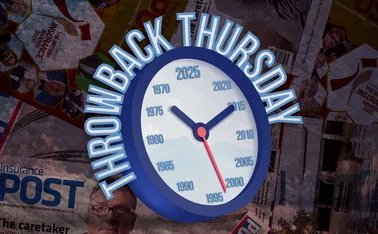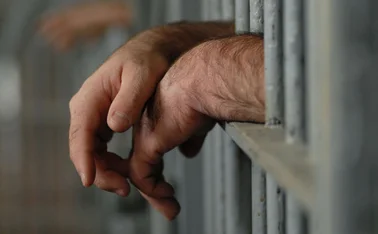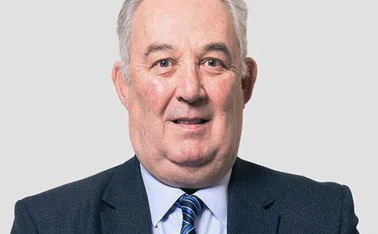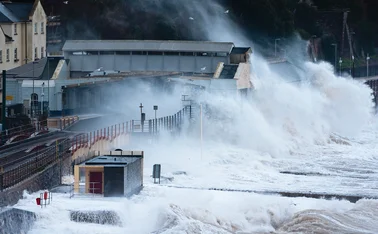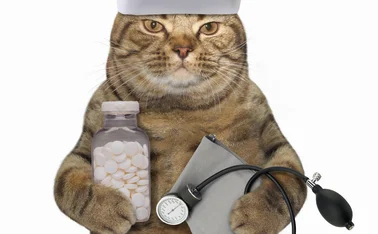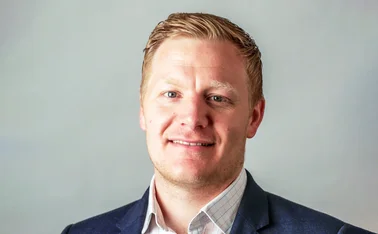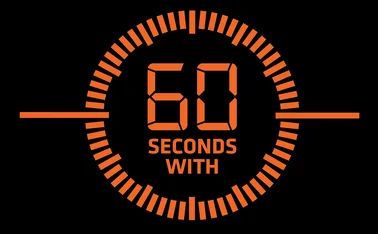
BIA Countdown: Industry stalwart Gerry Loughney on 20 years of the BIAs
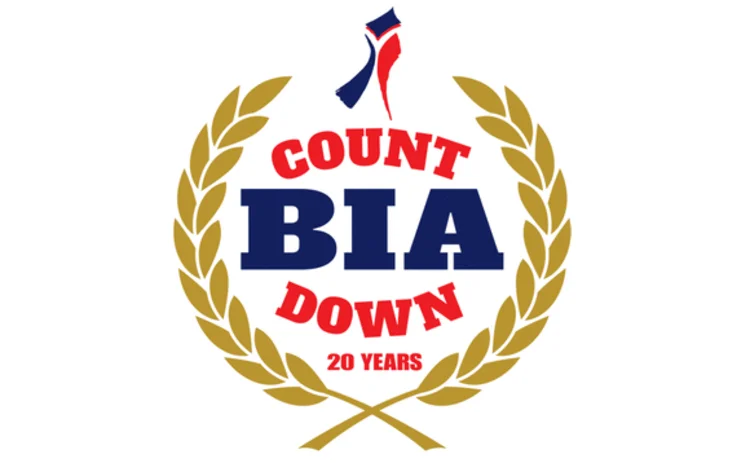
Since their inception, the British Insurance Awards have become the unrivalled badge of excellence for the insurance sector, raising standards across the industry through their showcasing of best‑of‑breed performance and innovation.
In 2014, with 25 categories recognising the cream of British insurance, we are proud to continue the legacy of the BIAs in this special 20th anniversary year.
To celebrate this momentous occasion, Post is speaking to previous winners about their opinions on how the industry has changed over the past 20 years, as well as asking them to share their best BIA memories.
Gerry Loughney is an insurance industry stalwart, having been in the profession for some 40 years. As chairman of Cunningham Lindsey and a former Chartered Institute of Loss Adjusters president, market commentators agree Loughney has consistently been at the front of the pack in the loss adjusting sector.
How do you think the loss adjusting industry has changed over the past 20 years?
We’re significantly more client and customer focused now than 20 years ago. Today, clients are much more involved in deciding precisely what they want us to deliver and how we should do it. We’re all far more centred on achieving a great claims outcome for the customer.
Gerry Loughney
Chairman of the Trustees, Cunningham Lindsey UK Pension Scheme
Career in Loss Adjusting, 1970 to 2013
October 2013: Retired from Cunningham Lindsey UK January
2006: Chairman, Cunningham Lindsey UK October
1999: Chief executive, Cunningham Lindsey UK October
1998: CEO, Cunningham Ellis & Buckle
May 1987: Managing director, Ellis & Buckle; director of Rutland Trust January
1984: Appointed to main board, Ellis & Buckle
July 1983: Regional director, Ellis & Buckle Wales, West and Midlands March 1983: Associate director, Ellis & Buckle London
January 1978: Associate director, Ellis & Buckle
April 1973: Branch manager, Ellis & Buckle Swansea
March 1970: Joined Ellis & Buckle Swansea as trainee loss adjuster
Professional Qualifications
1978: Completed fellowship of Chartered Institute of Loss Adjusters
1973: Completed associateship of CILA
1970: Completed fellowship of Chartered Insurance Institute
1967: Completed associateship of CII
How has technology affected loss adjusting?
Technology has had a significant impact on loss adjusting. Real-time claims processing provides everyone involved with all the information they need to make important decisions instantly. We also have huge data analysis capability, which gives us a better and more detailed understanding of claims costs, frequencies and relevant claims issues and experience. More importantly, technology has also helped reduce the cost of claims handling significantly.
Which major loss events have affected the loss adjusting landscape most significantly over the past 20 years?
The Great Storm of 1987 had a dramatic impact on the loss adjusting industry. It emphasised the need for event management as well as individual claims management. Since then, we’ve had various major events. Subsidence surges in the 1970s and 1980s both accelerated the drive into specialist claims handling and [also led to the creation of] strategic initiatives to deal with large volumes of similar claims. More recently, the plethora of extreme weather events has focused the industry on more efficient approaches to drying out and reinstatement works.
How do you think the introduction of loss adjusting panels changed the face of the industry?
The introduction of loss adjusting panels drove consolidation among medium-sized practices, as they positioned themselves to provide a nationwide service as well as a local one.
How has climate change affected the loss adjusting sector?
Not really. There’s been a significant increase in major weather events but the jury is out as to whether these are caused by climate change. [In fact, climate change could be a positive] — we’re better at providing flood-resilient reinstatement options to customers living in high-risk flood areas, and we’re all constantly trying to improve our green credentials. This can be attributed to the warnings of climate change.
How much of a problem has fraud become for the loss adjusting industry? What are the best ways of combating it?
The problem of fraud is the same as it’s always been. Perpetrators have become more innovative and entrepreneurial, but we’re also more vigilant and we have some excellent tools to help spot suspicious behaviour. Fraud is something we all have to think about, from front line awareness to specialist backup, where required. We also have to learn from our experiences and make sure our people get the required training in counter-fraud practices.
What makes a great loss adjuster?
You have to hire people with the right attitude. A loss adjuster must be friendly and approachable, so they can quickly build relationships of trust in difficult situations. Good adjusters are open and know how to set and manage the customer’s expectations. They care about what they do and above all, want to do the right thing for the customer.
What has been your biggest disappointment of the past 20 years?
I’m rarely disappointed for long, as things have a way of working out for the best. Probably my biggest disappointment occurred after the merger of Commercial Union and General Accident. In its first panel review, it decided to drop Ellis & Buckle, one of the biggest overall suppliers. It was devastating at the time, but two years later when Norwich Union took over CGU, we got the work back again. When you’re successful in panel appointments like this, it can alter your business dramatically, as you make changes to service that new relationship. When you’re unsuccessful, it’s going to hurt.
What do you regard as your biggest achievement in the insurance industry?
I would have to choose between growing Ellis & Buckle to become the UK’s most successful loss adjusting practice in the 1980s, creating Cunningham Lindsey and becoming the UK’s largest practice in the 1990s, or the development of the Specialist Adjusting Unit and Project Managed Subsidence initiatives. These were all big achievements in the industry, but they weren’t all down to me. There are some great people who have played an enormous part in making these good concepts work.
What achievement in your career are you most proud of?
It’s always nice to get peer recognition, so winning the BIA for Achievement was a very proud moment for me.
What is your top tip for climbing the insurance career ladder?
I didn’t start out with a plan. I always concentrated on the job in hand and just tried to do everything to the best of my ability, while constantly looking for good ideas that would improve what we do for our clients and their customers. If you work hard and really care about what you do, you stand a good chance of being successful.
Where do you keep your Achievement Award?
It used to take pride of place in Cunningham Lindsey’s offices in Reading. Now I’ve retired it’s still got pride of place but in my study, on the bookcase.
If you hadn’t entered the loss adjusting industry, what would you have done as an alternative career?
I had some 20 jobs before I joined Ellis & Buckle, but after that I had no interest or cause to consider any other careers.
What is your best memory of the BIAs?
Winning the British Insurance Loss Adjuster of the Year Award for our Miller Fisher initiative in 2002. It recognised a good job done by a great many people during a difficult time for the industry.
What do you see as the future for loss adjusting?
There is a great future for loss adjusting. It has a strong ethical basis, particularly in its own charter. It’s also committed to professional development, both within the Chartered Insurance Institute and the Chartered Institute of Loss Adjusting. Loss adjusters are great people who do great things every day and rise to the many challenges of surge events and national disasters, regarding it as part and parcel of the job. There will always be claims and insurers will always need competent people to deal with them, whether they are their own staff or external professionals.
This article was published in the 13 March edition of Post magazine
Only users who have a paid subscription or are part of a corporate subscription are able to print or copy content.
To access these options, along with all other subscription benefits, please contact info@postonline.co.uk or view our subscription options here: https://subscriptions.postonline.co.uk/subscribe
You are currently unable to print this content. Please contact info@postonline.co.uk to find out more.
You are currently unable to copy this content. Please contact info@postonline.co.uk to find out more.
Copyright Infopro Digital Limited. All rights reserved.
As outlined in our terms and conditions, https://www.infopro-digital.com/terms-and-conditions/subscriptions/ (point 2.4), printing is limited to a single copy.
If you would like to purchase additional rights please email info@postonline.co.uk
Copyright Infopro Digital Limited. All rights reserved.
You may share this content using our article tools. As outlined in our terms and conditions, https://www.infopro-digital.com/terms-and-conditions/subscriptions/ (clause 2.4), an Authorised User may only make one copy of the materials for their own personal use. You must also comply with the restrictions in clause 2.5.
If you would like to purchase additional rights please email info@postonline.co.uk
